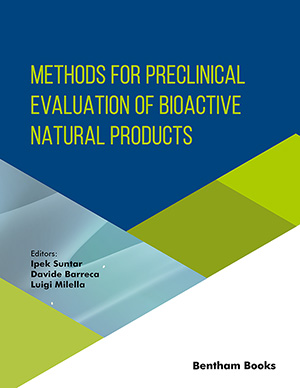Abstract
Background: Valproic acid/sodium valproate (VPA), a well-known anti-epileptic agent, inhibits histone deacetylases, induces histone hyperacetylation, promotes DNA demethylation, and affects the histone methylation status in some cell models. Histone methylation profiles have been described as potential markers for cervical cancer prognosis. However, histone methylation markers that can be studied in a cervical cancer cell line, like HeLa cells, have not been investigated following treatment with VPA.
Methods: In this study, the effect of 0.5 mM and 2.0 mM VPA for 24 h on H3K4me2/me3, H3K9me/me2 and H3K27me/me3 signals as well as on KMT2D, EZH2, and KDM3A gene expression was investigated using confocal microscopy, Western blotting, and RT-PCR. Histone methylation changes were also investigated by Fourier-transform infrared spectroscopy (FTIR).
Results: We found that VPA induces increased levels of H3K4me2/me3 and H3K9me, which are indicative of chromatin activation. Particularly, H3K4me2 markers appeared intensified close to the nuclear periphery, which may suggest their implication in increased transcriptional memory. The abundance of H3K4me2/me3 in the presence of VPA was associated with increased methyltransferase KMT2D gene expression. VPA induced hypomethylation of H3K9me2, which is associated with gene silencing, and concomitant with the demethylase KDM3A, it increased gene expression. Although VPA induces increased H3K27me/me3 levels, it is suggested that the role of the methyltransferase EZH2 in this context could be affected by interactions with this drug.
Conclusion: Histone FTIR spectra were not affected by VPA under present experimental conditions. Whether our epigenetic results are consistent with VPA affecting the aggressive tumorous state of HeLa cells, further investigation is required.
Keywords: Epigenetics, HeLa cells, histone methylation, histone demethylase, EZH2, VPA.
[http://dx.doi.org/10.1016/S0920-1211(02)00182-1] [PMID: 12445957]
[http://dx.doi.org/10.1155/2010/479364] [PMID: 20798865]
[http://dx.doi.org/10.1093/emboj/20.24.6969] [PMID: 11742974]
[http://dx.doi.org/10.1074/jbc.M101287200] [PMID: 11473107]
[http://dx.doi.org/10.1016/j.cnr.2004.09.013]
[http://dx.doi.org/10.1016/j.bcp.2005.02.012] [PMID: 15857614]
[http://dx.doi.org/10.1016/j.cbi.2017.12.003] [PMID: 29225137]
[http://dx.doi.org/10.1016/j.bioorg.2020.103797] [PMID: 32247939]
[http://dx.doi.org/10.3389/fcell.2021.645518] [PMID: 33959607]
[http://dx.doi.org/10.1002/med.10017] [PMID: 12210556]
[http://dx.doi.org/10.1007/s11060-007-9402-7] [PMID: 17534580]
[http://dx.doi.org/10.1093/jb/mvn074] [PMID: 18515856]
[http://dx.doi.org/10.1016/j.bbrc.2018.11.103] [PMID: 30466785]
[http://dx.doi.org/10.1158/0008-5472.CAN-06-2595] [PMID: 17308113]
[http://dx.doi.org/10.1016/j.ctrv.2007.11.003] [PMID: 18226465]
[http://dx.doi.org/10.1016/j.canlet.2009.03.013] [PMID: 19345475]
[http://dx.doi.org/10.1074/jbc.M109.057836] [PMID: 20145244]
[http://dx.doi.org/10.1016/j.ejphar.2018.07.057] [PMID: 30075223]
[http://dx.doi.org/10.1186/s13578-019-0312-0] [PMID: 31244991]
[http://dx.doi.org/10.21873/invivo.11445] [PMID: 30587609]
[http://dx.doi.org/10.1093/carcin/bgl167] [PMID: 17012225]
[http://dx.doi.org/10.1073/pnas.1008522107] [PMID: 20679231]
[http://dx.doi.org/10.1038/npp.2009.188] [PMID: 19924110]
[http://dx.doi.org/10.1371/journal.pone.0036660] [PMID: 22574209]
[http://dx.doi.org/10.1371/journal.pone.0170740] [PMID: 28114349]
[http://dx.doi.org/10.1038/s41598-019-54848-x] [PMID: 31796828]
[http://dx.doi.org/10.1158/0008-5472.CAN-04-2478] [PMID: 15867379]
[http://dx.doi.org/10.1016/j.dnarep.2016.05.013] [PMID: 27247237]
[http://dx.doi.org/10.1038/nature09303] [PMID: 20639862]
[http://dx.doi.org/10.1038/nature12362] [PMID: 23812591]
[http://dx.doi.org/10.1038/nrm3589] [PMID: 23698584]
[http://dx.doi.org/10.1016/j.exer.2014.01.021] [PMID: 24525405]
[http://dx.doi.org/10.1002/msb.134974] [PMID: 24714364]
[http://dx.doi.org/10.1038/nrg3173] [PMID: 22473383]
[http://dx.doi.org/10.1038/ng1966] [PMID: 17277777]
[http://dx.doi.org/10.1101/gr.5767907] [PMID: 17135569]
[http://dx.doi.org/10.1016/j.biochi.2006.07.009] [PMID: 16919862]
[http://dx.doi.org/10.1074/jbc.M114.627646] [PMID: 25561738]
[http://dx.doi.org/10.1073/pnas.082249499] [PMID: 12060701]
[http://dx.doi.org/10.1016/j.cell.2005.01.001] [PMID: 15680324]
[http://dx.doi.org/10.1038/nature01080] [PMID: 12353038]
[http://dx.doi.org/10.1016/j.cell.2007.05.009] [PMID: 17512414]
[http://dx.doi.org/10.1038/emm.2017.11] [PMID: 28450737]
[http://dx.doi.org/10.1007/s00018-017-2596-8] [PMID: 28717873]
[http://dx.doi.org/10.1016/j.tibs.2013.09.004] [PMID: 24148750]
[http://dx.doi.org/10.1093/nar/gkr416] [PMID: 21652639]
[http://dx.doi.org/10.1074/jbc.M606773200] [PMID: 17166833]
[http://dx.doi.org/10.1016/j.taap.2010.08.001] [PMID: 20705080]
[http://dx.doi.org/10.1016/j.neuropharm.2010.09.022] [PMID: 20888352]
[http://dx.doi.org/10.1186/1756-8935-6-11] [PMID: 23634885]
[http://dx.doi.org/10.1080/07391102.2014.938247] [PMID: 25012937]
[http://dx.doi.org/10.1073/pnas.1009933108] [PMID: 21245294]
[http://dx.doi.org/10.3390/ijms18030477] [PMID: 28241481]
[http://dx.doi.org/10.3892/or.2013.2747] [PMID: 24064712]
[PMID: 29556280]
[http://dx.doi.org/10.1186/1476-4598-7-70] [PMID: 18789133]
[http://dx.doi.org/10.1371/journal.pone.0029144] [PMID: 22206001]
[http://dx.doi.org/10.1016/j.ijbiomac.2017.02.098] [PMID: 28263810]
[http://dx.doi.org/10.1016/j.ijbiomac.2020.06.265] [PMID: 32619665]
[http://dx.doi.org/10.25824/redu/XPTX4F]
[http://dx.doi.org/10.1038/nprot.2007.202] [PMID: 17545981]
[http://dx.doi.org/10.1016/j.acthis.2014.08.007] [PMID: 25213809]
[http://dx.doi.org/10.1134/S1990519X14040087]
[http://dx.doi.org/10.1016/j.micron.2010.09.010] [PMID: 21134761]
[http://dx.doi.org/10.1016/j.bbagen.2011.06.010] [PMID: 21722709]
[http://dx.doi.org/10.1002/cmdc.200800112] [PMID: 18613204]
[http://dx.doi.org/10.1038/sj.leu.2403910] [PMID: 16121216]
[http://dx.doi.org/10.1007/s10549-011-1480-8] [PMID: 21452019]
[http://dx.doi.org/10.1159/000438515] [PMID: 26510156]
[http://dx.doi.org/10.1038/nmat3777] [PMID: 24141451]
[http://dx.doi.org/10.1038/tp.2015.90] [PMID: 26171981]
[http://dx.doi.org/10.1016/j.immuni.2014.11.001] [PMID: 25517617]
[http://dx.doi.org/10.1038/35055010] [PMID: 11175742]
[http://dx.doi.org/10.1242/jcs.02621] [PMID: 16254244]
[http://dx.doi.org/10.1101/gr.5540007] [PMID: 17567991]
[http://dx.doi.org/10.4161/nucl.26209] [PMID: 23962805]
[PMID: 28476938]
[http://dx.doi.org/10.1016/S1097-2765(03)00479-9] [PMID: 14690610]
[http://dx.doi.org/10.1091/mbc.e04-11-0997] [PMID: 15788566]
[http://dx.doi.org/10.1096/fj.09-140145] [PMID: 19752176]
[http://dx.doi.org/10.1002/jcp.25343] [PMID: 26888775]
[http://dx.doi.org/10.1016/j.stemcr.2017.04.006] [PMID: 28494938]
[http://dx.doi.org/10.1038/nature09784] [PMID: 21248841]
[http://dx.doi.org/10.1016/j.tibs.2010.05.006] [PMID: 20685123]
[http://dx.doi.org/10.1016/j.stem.2008.11.011] [PMID: 19128795]
[http://dx.doi.org/10.1186/s13072-015-0021-9] [PMID: 26380582]
[http://dx.doi.org/10.18632/oncotarget.16964] [PMID: 28445158]
[http://dx.doi.org/10.25824/redu/OSK2UP]
[http://dx.doi.org/10.1007/s13277-014-1737-z] [PMID: 24554414]
[http://dx.doi.org/10.1186/s13072-021-00432-5]































